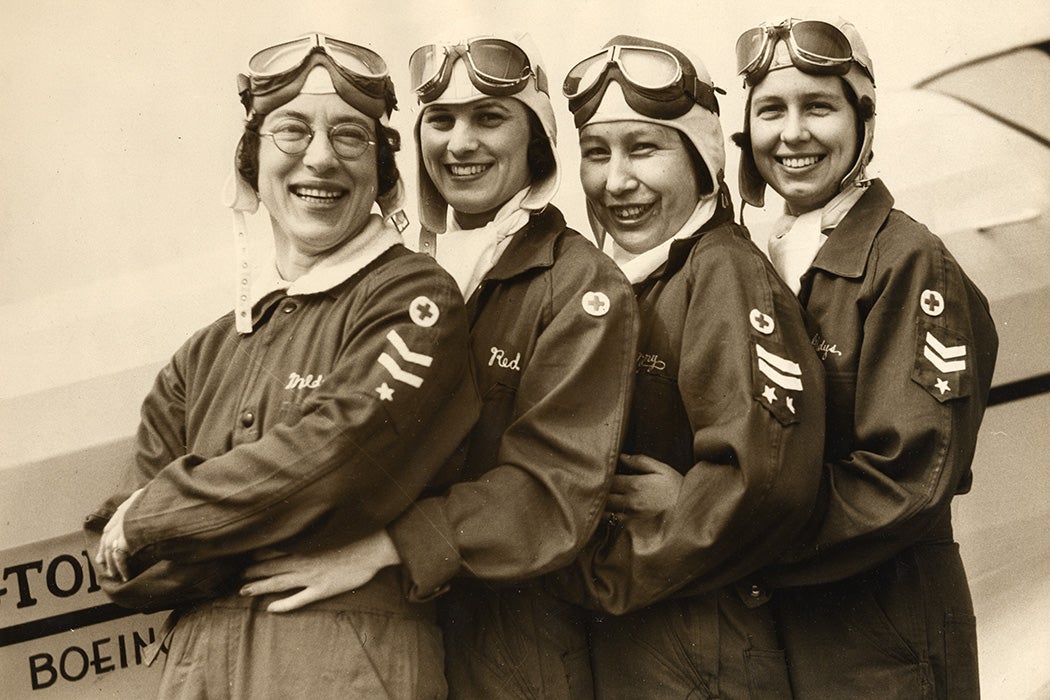Mary Riddle was a daredevil. Whether it involved cars, motorcycles, swimming, or travel, she had a thirst for adventure. But it was her love of flying that put her in the history books. Born Nannie Riddell in Willapa Bay, Washington, in 1902, the woman who’d come to be known as Mary Riddle was one of the earliest Native American women aviators. Flying under the name “Princess Kus-de-cha,” Riddle walked a line as did many people of color—never hiding their identity, but often leaning into it in ways that seem stereotypical to modern eyes. But as cultural anthropologist Llyn De Danaan points out, Riddle was “earning a name for herself as a woman pilot in the male-dominated world of American aviation, applying the stereotype of ‘Indian princess’ to overcome gender and race barriers proved an effective strategy.”
As De Danaan explains, by the 1930s, when Riddle took flight, there were many women aviators. In 1929, for example, there were enough women flying to stage the first National Women’s Air Derby. But Riddle bore the dual oppressions of race and gender, making her achievements even more extraordinary.
Riddle was born into a family of mixed heritage. Members of her family included “Pacific Ocean whaler Valentine Starbuck as well as the infamous Captain George Pollard of the doomed whaling ship Essex,” De Dannan writes. And her paternal grandfather, John Riddell, made his fortune during the California gold rush. He married Mary Armstrong, the daughter of a Satsop (Salishan) leader. Mary and John had two sons, one of whom, Albert, was Nannie’s father. Nannie’s mother was raised on the Shoalwater Bay Reservation, home of the Willapa Chinook people who had been displaced and moved to the area after the 1851 Tansey Point Treaty.
When John Riddell died in 1904, he left a generous portion of his estate to his grandchildren. A year later, Nannie’s mother died, and the Riddell children went to Chemawa Indian School, a federally run boarding school in Oregon. When she turned eighteen in 1920, she received her inheritance, giving her “the means to become a truly modern young American woman with all the trappings of wealth, including cars, stylish hats and bobbed hair, furs, and fine clothing.” One of her first purchases was a Ford sedan, quickly followed by an Indian Scout motorcycle. She was an avid rider, joining a motorcycle club and participating in several races.
But the skies were calling her. She enrolled in a Portland aviation school under the name “Mary Riddle,” perhaps taking on that name from a misspelling on her grandmother’s headstone. She earned her commercial license and later joined the Ninety-Nines, an association of women pilots. Her wealth enabled her to easily afford flight school, but no amount of money could fight sexism. There were derisive comments from male pilots, and as De Dannan writes, “[o]ccasionally the prejudice [female pilots] encountered from men amounted to outright sabotage,” including tampering with women’s equipment to ensure failure.
Weekly Newsletter
Riddle later hit the barnstorming circuit, appearing as Princess Kus-de-cha, often in full (though not necessarily accurate) regalia and long braids. She “capitalized on the myth of the Indian princess and exercised it in a way that glamorized her presence and, in her case, memorialized her own flying achievements,” De Danaan writes. Throughout the 1930s, she “completed at least 100 parachute jumps, including training, practice, and exhibition jumps,” along with several stunt flights, including one notable one where she flew a plane with breakaway wings.
Though her image relied on “largely non-Native ideations of Native women that fetishized the exotic,” Riddle’s presence in the aviation world made an impact. Had she not “worn her buckskin and braids and publicized herself as an Indian woman, the public might not have been aware that Native American women were among those paving the way for all women in aviation,” De Dannan notes. “Her imaginative self-branding, and her accomplishments as a pilot place her among those adventurous women of the early twentieth century who forged new opportunities for themselves and excelled beyond the assumed limitations of gender and race.”
Support JSTOR Daily! Join our membership program on Patreon today.







